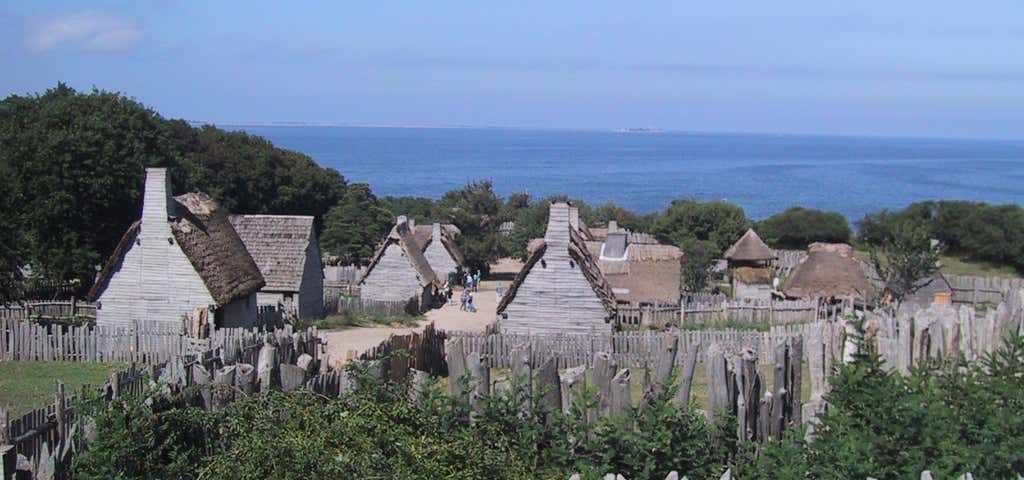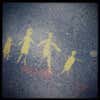“explore 17th-century life!”
Thanksgiving isn't all about eating too much turkey and pie, enduring family weirdness, and passing out while watching football. It's about the early settlers to America, and how they finally learned to get along with the people already living here. We all know the age-old story of how the Pilgrims landed at Plymouth Rock, starry-eyed and optimistic, and how the Native Americans in the region saved their sorry butts from starvation. The whole ordeal ended with a big, post-harvest feast of turkey, cranberries, mashed potatos, pumpkin pie, and Aunt Bertha's weird green bean casserole. At least, that's what we're taught in grade school. Myths and legends aside, the Pilgrims and Native Americans actually existed, and you can learn all about them at Plimoth Plantation. It's dedicated to researching and preserving the ways of life and the cultues of both the Pilgrims and the Wampanoag tribe would have lived back then with a living history museum. Stop by the Wampanoag homesite, a recreated nush wetu longhouse, to learn about how these Native Americans were able to survive by farming, fishing,, hunting, gathering, and more. Ask the re-enactors, all of native heritage, any question you can think of, from technology and traditions to music, dancing and stories, and they'll have an answer. They'll even teach you how to play traditional Wampanoag games, like hubbub, or show you how to carve a canoe! From there head to the 17th-Century English Village, where you'll find many wooden houses and lots of colorful, costumed characters. The actors have all assumed the roles of people who lived in the village circa 1627. Ask them about their religious beliefs, their thoughts on education, or if you want an engaging conversation, ask them about their relationship with the nearby Natives. Explore the buildings, gardens and fields of the town, and feel free to strike up a conversation with anyone-- or to take part in any everyday activities going on. Plimoth Plantation also offers visitors a chance to see how many of the items used in the village were made. Since they strive to be as authentic as possible, many of the "props" were made the old-fashioned way at the Craft Center. Everything from cooking and baking to gunsmithing and cabinet-making is studied, practiced and taught here. It's a behind-the-scenes peek, in a way, and they offers tons of hands-on activities. They also offer a chance to meet rare, historic breeds of animals (goats, sheep, pigs, birds, and more) that would have lived in Plimoth at the time as well. They've even got a working 1640's-era grist mill and a full-scale replica of the Mayflower, called the Mayflower II. Climb aboard the ship and see just how cramped, dark and dingy the conditions on board were for the Pilgrims-- it'll give you an even better idea of just how thankful they were to reach the New World, and maybe convince you that Turkey Day with the family isn't so bad after all. -Roadtrippers Telling the iconic story of Plymouth Colony was the fulfillment of a young archaeologist’s boyhood dream. With help and support from friends, family and business associates, Henry Hornblower II started the Museum in 1947 as two English cottages and a fort on Plymouth’s historic waterfront. Since then the Museum has grown to include Mayflower II (1957), the English Village (1959), the Wampanoag Homesite (1973), the Hornblower Visitor Center (1987), the Craft Center (1992), the Maxwell and Nye Barns (1994) and the Plimoth Grist Mill (2013). Today, Plimoth Plantation provides an engaging and experiential outdoor and indoor learning environment on its main campus and at the State Pier on Plymouth’s waterfront. Our permanent exhibits tell the complex and interwoven stories of two distinct cultures - English and Native. The main exhibits are enhanced with an exciting menu of special events, public programs and workshops that offer a rich and diverse exploration of the 17th-century. Generations of families, millions of school children and countless people from all over the world have visited here and participated in Plimoth Plantation’s educational experiences that spark the imagination, delight the senses, touch the heart and enrich the mind.
Reviews
This was a stop I was looking forward to. I love Visiting attractions like this. Plymouth Plantation was pretty interesting. The whole plantation isn't very big and you could do it in an hour or two. The people were very knowledgable. You can stick around and listen to them talk about life back then as if it were today.
American history buff here! This is one of those rare places you can visit to get a "you are there" experience. The folks who work here are experts of this time in American history, and while it is play acting, these people are teachers.
For your kids, it's a look into a time of what every day life was really like. If they get bored, take them to one of the musket firings!
Lovely living history museum! Very knowledgeable staff throughout the experience. Would recommend for any history buff!
Plymouth is home to Plimoth Plantation, although the name has now been officially changed to the Plimoth Patuxet Museum. Here you can take a step back to the 17th century and learn about the Native Americans’ lifestyle when the Mayflower II and the English colonists arrived.
This American history museum truly has a lot to offer and can be a great place for not only adults, but kids as well. Founded in 1947, the goal of this museum is to recreate the Plymouth Colonization through several exciting exhibits. One of the best kids activities is their program to teach kids about Pilgrim life, while letting them be an actor/actress in a show later that day!
We think a visit here is one of the best things to do in Massachusetts!
We didn’t have a lot of time to spend, but it was an educational stop. I wish they had more native people to discuss their point of view; but perhaps we missed that. We saw lots of pilgrims in character telling us facts about daily life.
The grounds are well-constructed.
I’m from New England. Forget Plymouth Rock. This is the main attraction along with Leiden street and mayflower two when you visit Plymouth.
A nice history thing, but for what you ended up getting I thought it was overpriced. Wasn't there on a day that much was going on - only a couple actors interacted with us... most just ignored that we were there. Doesn't take much time to get through. Mostly just could say we went there.
Fun and educational experience for the whole family. The staff here does a fantastic job of bringing history to life.
This was an amazing experience! The actors playing the residents were fantastic. Our kids loved it and so did we!
Neat idea, they have Authentic Native Americans and actors playing the roles of Pilgrims. However, I felt it was over priced. Great for history buffs.
Be the first to add a review to the Plimoth Plantation.
/-70.625332,41.938166,14/300x172@2x?access_token=pk.eyJ1Ijoicm9hZHRyaXBwZXJzIiwiYSI6ImNsdjQ5N2VtZDA2bW8ycW13ZHAxeGhjbjkifQ.UIccpoAxc7g3BAuK4s9vjg)
Plimoth Plantation
Hours
- Sun - Sat: 9:00 am - 5:00 pm
Problem with this listing? Let us know.
Has RV parking changed? Let us know.
-
Parking
-
Pets Allowed
-
Restrooms
-
Wifi
-
Wheelchair Accessible
-
Credit Cards Accepted
-
Outdoor Seating
Parking, Dining
Nearby Hotels
Related Trip Guides
The top things to do on an East Coast road trip
- 32 Places
- 48:54
- 2,584 mi
Visit the spooky real-life locations from 'Hocus Pocus'
- 5 Places
- 00:22
- 6 mi
The top things to do on an I-95 road trip
- 50 Places
- 41:46
- 1,983 mi










